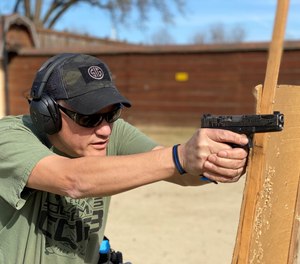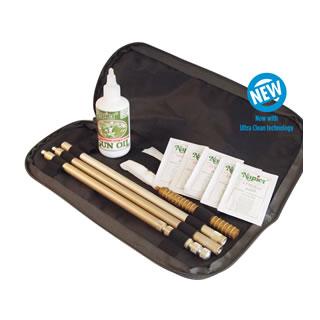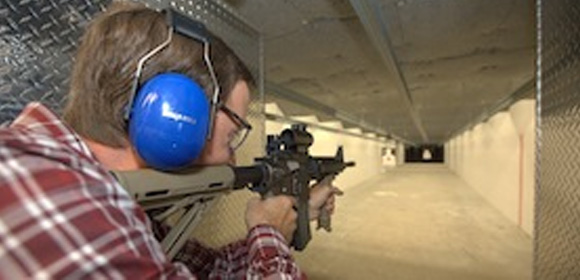
Before deciding to get into trapshooting, you should learn some basic rules. Trapshooters start with 16-yard singles. While you wait to get a turn, a live gun can be kept in your pistol. After that, you can move on with an unloaded weapon to the next stand. Trapshooters are known for being a bit aloof towards newcomers, so this can be intimidating. This can have a negative impact on your concentration, shooting rhythm, or score.
Sporting-clays guns weigh less than trap and skeet gun
These guns are an alternative to traditional traps. They are typically different from trap or skeet guns in that they have multiple targets. Traps on the other side are designed to withstand repeated usage over several days. Sporting-clays guns are lighter and more suitable for hunting with a partner because they can be carried around easily.

Targets can be thrown at any angle possible
There are three main categories of trap shooting: singles; doubles; and squads. Singles are a shooting sport where shooters stand 16 yards from the center of the trap house and aim at randomly placed targets at random angles. Five shooters make up a squad. They rotate between four positions that are three feet apart. In a series of rounds, singles, doubles and squads compete against each other.
To shoot traps, it is crucial to have the right eye placement
It is important to have the right eye position when shooting traps. The trap house (or target) rotates in an unpredicted order. Shooters need to learn how to track the target with their eyes. Divergence, tracking and identification will allow shooters to locate the target in the distance. These skills are essential for accuracy shooting and can make a significant difference to your success.
Rules
There are various rules and regulations regarding the game of trap shooting. There are two main types of shooting: true pair and report. Report shooting involves shooting only one target, or true pairs with another person. The shooter must enter a designated cage where he can shoot the targets. The true pair shooting competition is a group activity. Each member of the team is allowed to shoot one or more show birds. The target will be called out by this person.
Equipment is required
You will need several items if you wish to learn to shoot trap. In addition to a gun, trap shooters will also need ear and eye protection. Trap shooters typically use 12-gauge target loads with no. 7 1/2 or eight shot, however you can use any shop-bought load. Many competitive shooters prefer trap-specific loads. Also, some people hand-load their own ammunition.

Getting started
Adjusting your eyeline is one of the most important things you should do before starting to shoot trap. Do not stare at the shotgun ribs. Instead, focus on the trap house's edge. Instead, look about 20 yards away and focus loosely on the debris field. This will allow you to see your target in the field of view. This will improve your ability to see the target and allow you to score the highest possible scores. Next, ensure that your gun works well and is responsive.
FAQ
Is hunting dangerous?
Yes, but hunting can also cause injury.
There are many different ways you could injure yourself.
Poor shooting techniques can be one of the reasons. An example of this is when you shoot at an incorrect angle or hit the wrong area of the animal.
Another danger is being attacked or bitten by another animal.
Hunting accidents happen every year. Many people are seriously or fatally injured by guns.
Hunters must ensure that their guns are not loaded until they reach their destination.
You should ensure that your guns are unloaded before you go into the woods.
Always keep your eyes peeled. Listen for the sounds and be attentive to your surroundings.
You must be able to defend yourself against any animal that you approach.
Never chase after prey. Instead, be patient and wait for prey to arrive.
Never take shortcuts. They can lead to injury or death.
You should be careful when you are near cliffs or other places where you cannot view what is below.
Avoid rivers and streams. These places can flood unexpectedly.
While hunting, avoid drinking alcohol. It can affect your judgment and slow down your reaction times.
You should always keep your safety equipment handy. Always carry a first-aid kit and flashlight.
It is essential to be able to handle an emergency. You don't need to know how to do CPR or first aid. Find someone who does.
Where can I buy a gun? What do I need?
To hunt certain species, a gun is required by law.
Most states require hunters possess a firearm. It depends on what game you intend to hunt and where you live.
Any sporting goods store can sell you a rifle and shotgun, handgun, pistol, muzzleloader, crossbow or archery weapon.
It is important to choose a weapon which suits your needs. For example, if you want to hunt small games such as squirrels, rabbits, and pheasant, you might consider purchasing a .22 caliber pistol.
A larger caliber weapon might be a good option if you intend to hunt large animals like bears, elk, or deer.
If you don't feel confident handling a weapon, do not buy it. A gun can be a dangerous weapon. Always keep it unloaded until you are ready to shoot.
Check that the gun has been properly inspected before you purchase it. Ask the seller to demonstrate how to unload and load the weapon.
The warranty provided by the manufacturer should be reviewed. Ask the dealer if they have a warranty.
Ask the dealer for a duplicate of their safety instructions. These documents should include details about safe storage, maintenance, and disposal.
Check the serial number. If the serial number begins with "NIB", or "New In Box", then the gun is brand new.
If the serial # begins with an odd numbers, the gun may have been previously owned.
You can contact the manufacturer directly if you are not sure if the gun has been used. They will be able to provide more information about the gun's history.
Why does the U.S. Department of Agriculture (USDA) estimate that only about 1 percent of hunters kill a deer every year?
USDA estimates that 6.5 Million Americans hunt deer. Only about 2.2 Million actually shoot one.
This means that about 0.6% of hunters kill a deer each season.
Statistics
- Thanks to the 1937 Pittman-Robertson Act, an 11% excise tax was placed on the sale of firearms, which were then used for conservation. (stacker.com)
- Over the past 50 years, the number of hunting licenses in California has been on a rapid decline, falling 70% from more than 760,000 in the 1970s to under 268,000 in 2020—even as the state's population has skyrocketed, according to The Mercury News. (stacker.com)
- - Percent of residents with paid hunting licenses: 0.7%- (stacker.com)
- - Percent of residents with paid hunting licenses: 0.7%- (stacker.com)
External Links
How To
How to hunt wild hogs
Large, large wild hogs are found all over North America, Africa Asia, Asia, Europe. Wild hogs eat both vegetation and small animals, such as birds, fish, mice, rabbits and mice. They feed mostly at night. One piglet is born after the gestation period of approximately six months. A sow gives birth every two years. Wild hogs live alone, but sometimes they are part of a group called herds.
Wild boars typically weigh around 200 pounds (90kg). Their head length ranges between 10-12 inches (20-25 cm) and 20-30 inches (30-50 cm) respectively. Wild pigs have long legs, broad shoulders, and short tails. They have a thick fat layer beneath their skin.
They have strong senses of smell, hearing and sight. They use their senses to identify danger and find food. They can run upto 35 miles an hour (56 km/h), and can jump up to 15 feet (4m) in a single bound. They have sharp teeth and claws. They are aggressive when defending themselves against predators.
Hunting wild Hogs can be difficult as they are agile, intelligent, and elusive. They must be carefully tracked by hunters. If hunters shoot too early, the animal may escape. The animal could die if hunters attempt to shoot it too soon.
There are many types of hunting methods used to kill wild hogs. The most common method of killing wild hogs is to shoot. This involves hunting the animal down and waiting for it to come within range. Trapping is another method. The trapping method involves placing traps close to water sources that the hogs can drink. Some traps contain a smell lure, such a corn meal with peanut butter. Once the trap is released, the hunter will shoot the trapped pig.
Snaring is another option. To catch the pig, snaring uses a rope-covered noose. It is most effective if the pigs are caught in its mating period.
You can also use poisoning, spearing, or netting. Netting and spearing are methods of stopping pigs' breathing by placing a net around the neck or spearing them. Poisoning can be done by injecting poison into the body of the pig.
Hunting wild hogs is a challenging sport. Hunters should be prepared for winter. To stay warm in some areas, hunters can wear snowshoes. Hunting dogs may be used to track animals.